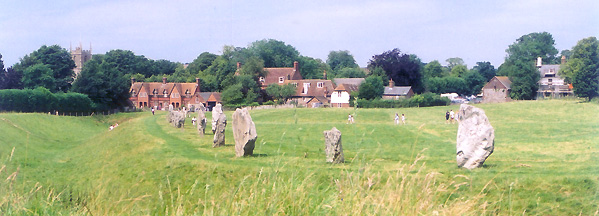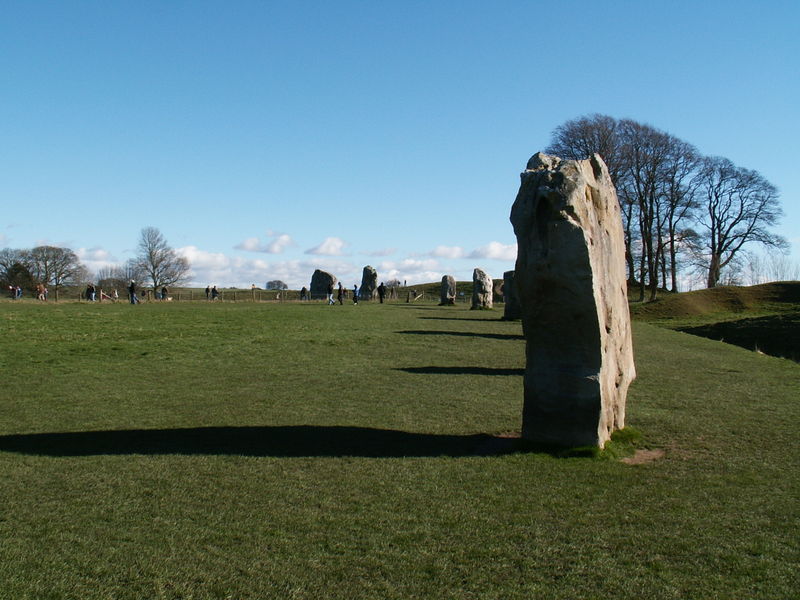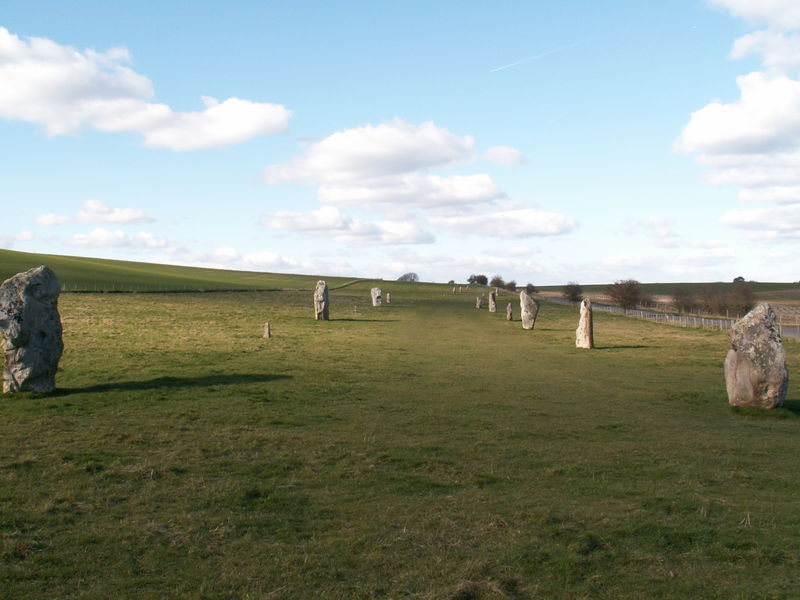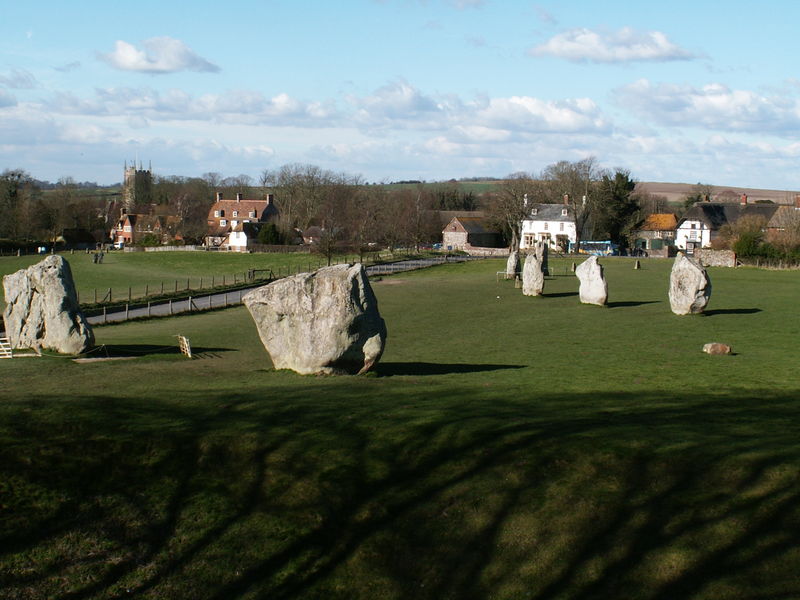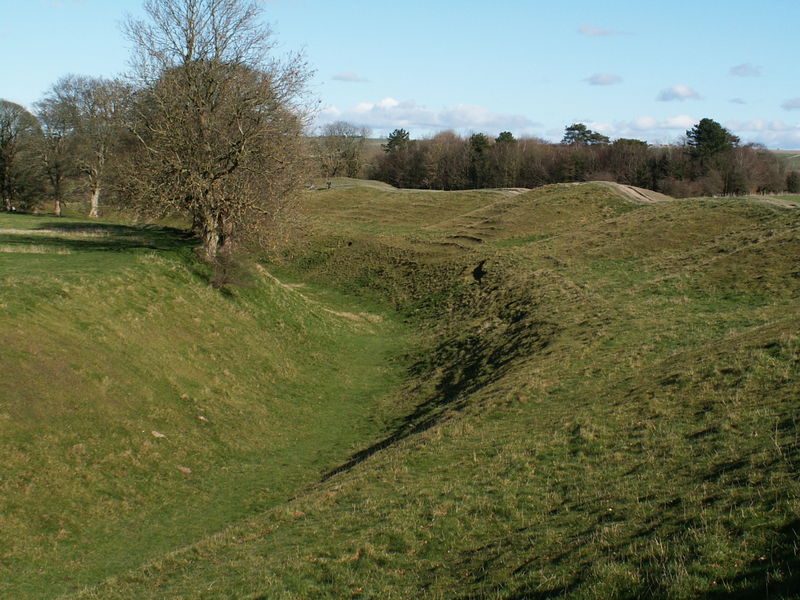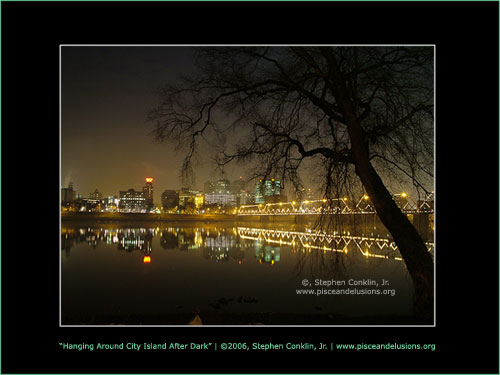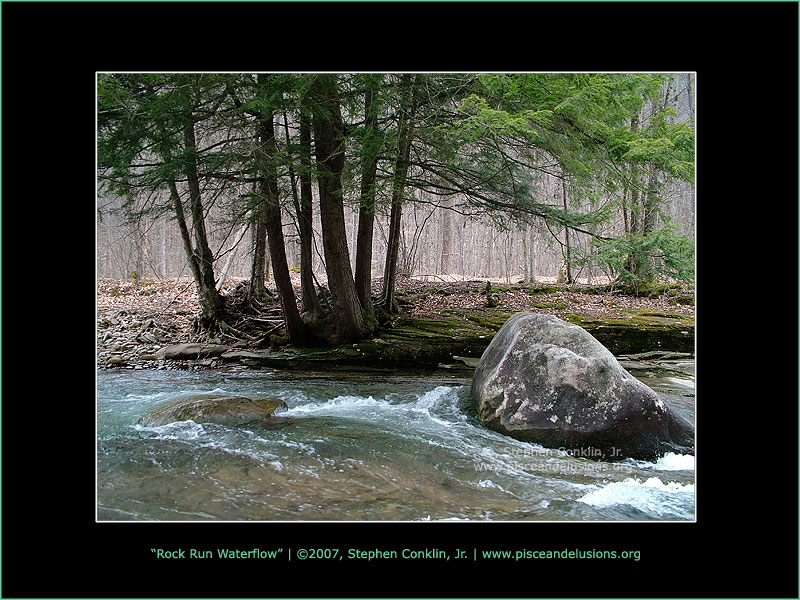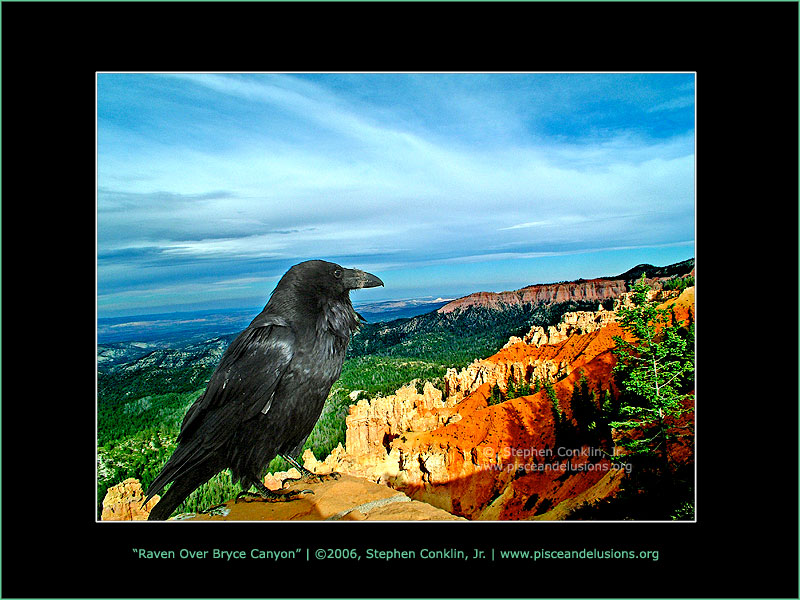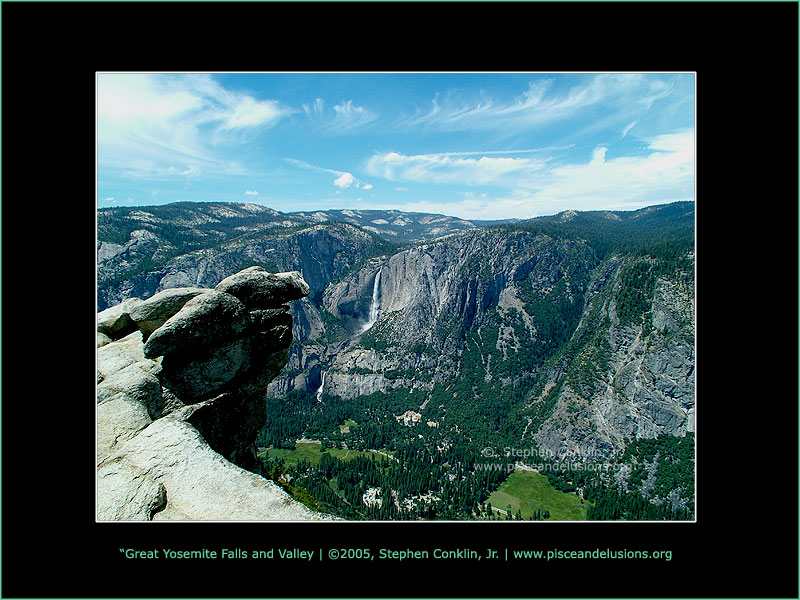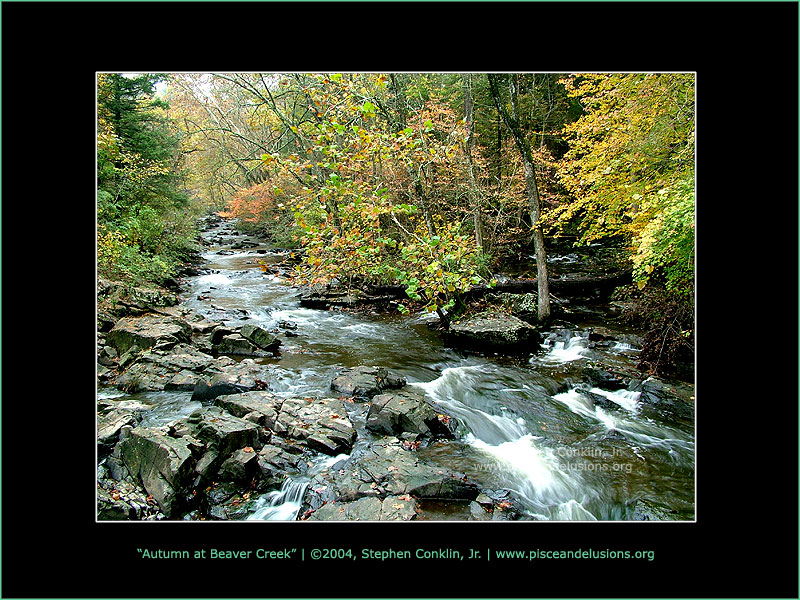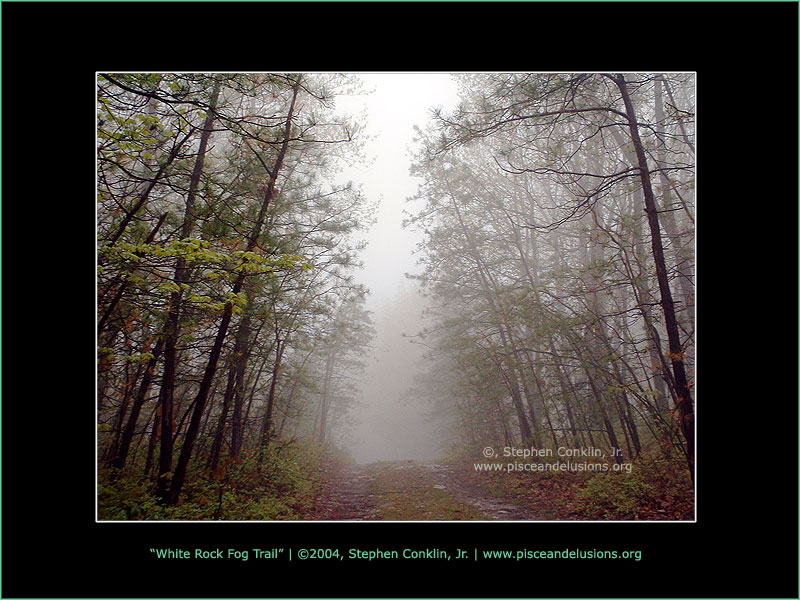
Interpretations - Mystical Places - Avebury - Wiltshire, England
Avebury is the site of a large henge and several stone circles in the English county of Wiltshire, surrounding the village of Avebury (its geographical location is 51°25′43″N, 1°51′15″W). It is one of the finest and largest Neolithic monuments in Europe dating to around 5000 years ago. It is older than the megalithic stages of Stonehenge, which is located about 32 km (20 miles) to the south, although the two monuments are broadly contemporary overall. It is situated approximately midway between the towns of Marlborough and Calne, just off the A4 national route on the northbound A361 towards Wroughton. Avebury is National Trust property. Part of the outer circle Most of the surviving structure consists of earthworks, known as the dykes. A massive ditch and external bank henge 421 m in diameter and 1.35 km in circumference encloses an area of 115,000 square metres (28.5 acres). The only known comparable sites of similar date (Stonehenge and Flagstones in Dorset) are only a quarter of the size of Avebury. The ditch alone was 21 m wide and 11m deep with its primary fill carbon dated to between 3400 and 2625 BC. A later date in this period is more likely although excavation of the bank has demonstrated that it was enlarged at one stage in its lifetime, presumably using material excavated from the ditch. The fill at the bottom of the final ditch would therefore post-date any in an earlier, shallower ditch which would have been destroyed. Within the henge is a great Outer Circle constituting prehistory's largest stone circle with a diameter of 335 m (1100 ft). It was contemporary with or built around four or five centuries after the earthworks. There were originally 98 sarsen standing stones some weighing in excess of 40 tons. They varied in height from 3.6 to 4.2 m for the examples at the north and south entrances. Carbon dates from the fills of the stoneholes are 2800 – 2400 BC. Nearer the middle of the monument are two other, separate stone circles. The Northern inner ring measures 98 m in diameter although only of two of its standing stones remain with two further, fallen ones. A cove of three stones stood in the middle, its entrance pointing north east. The stone avenue The Southern inner ring was 108 m in diameter. Almost all of it has been destroyed with sections of its arc now beneath the village buildings. A single large monolith, 5.5 m high, stood in the centre along with an alignment of smaller stones until they were destroyed in the eighteenth century. There is an avenue of paired stones, the West Kennet Avenue, leading from the south eastern entrance of the henge and traces of a second, the Beckhampton Avenue lead out from the western one. Aubrey Burl conjectures a sequence of construction beginning with the North and South Circles being erected around 2800 BC, followed by the Outer Circle and henge around two hundred years later and the two avenues being added around 2400 BC. A timber circle, of two concentric rings, identified through archaeological geophysics may also have stood in the north east of the outer circle although this has yet to be tested by excavation. A ploughed-out barrow is also visible from the air in the north western quadrant. The henge had four entrances, two opposing ones on a north north west- south south east line and two on an east north east- west south west line. Despite being an artificial structure, it was featured on the 2005 TV programme Seven Natural Wonders as one of the wonders of the West Country. Part of the southern inner ring (to right) Destruction of the stones Many of the original stones were destroyed from the early 14th century onwards to provide local building materials and to make room for agriculture. The stones were also destroyed due to a fear of the pagan rituals that were associated with the site. Both John Aubrey and later, William Stukeley visited the site and described the destruction. Stukeley spent much of the 1720's recording what remained of Avebury and the surrounding monuments. Without his work we would have a much poorer idea of how the site looked and especially little information on the inner rings. Only 27 stones of the Outer Circle survive and many of these are examples re-erected by Alexander Keiller in the 1930s. Since the early Middle Ages, people who considered them to be "pagan" attempted to bury or move them. This is famously personified by the story of the Barber surgeon of Avebury. Part of the outer ditch Excavations Excavation at Avebury itself has been limited. Sir Henry Meux put a trench through the bank in 1894, which gave the first indication that the earthwork was built in two phases. The site was surveyed and excavated intermittently between 1908 and 1922 by a team of workmen under Harold St George Gray. He was able to demonstrate that the Avebury builders had dug down 11 m into the natural chalk in excavating the henge ditch, producing an outer bank 9 m high around the whole perimeter of the henge and using red deer antler as their primary digging tool. Gray recorded the base of the ditch as being flat and 4 m wide although some later archaeologists have questioned his use of untrained labour to excavate the ditch and suggested that its form may have been different. Gray found few artefacts in the ditch fill but did recover scattered human bones, jawbones being particularly well represented. At a depth of about 2 m, Gray encountered a complete skeleton of a woman only 1.5 m tall who had been buried there. Keiller excavated beneath the stones he righted and dug further during the programme of beautification he forced onto the villagers after buying the site in 1934. When a new village school was built in 1969 there was also limited further opportunity to examine the site and an excavation to produce carbon dating material and environmental data was undertaken in 1982.
Theories about Avebury A great deal of interest has surrounded the stones at the monument which are often described as being in one of two categories; either being tall and slender or short and squat. This has led to numerous theories relating to the importance of gender in Neolithic Britain with the taller stones being considered 'male' and the shorter ones 'female'. The stones were not dressed in any way and may have been chosen for their pleasing natural forms. Numerous people have identified what they claim are carvings on the stones' surfaces, some carvings being more persuasive than others. The human bones found by Gray point to some form of funerary purpose and have parallels in the disarticulated human bone often found at earlier causewayed enclosure sites. Ancestor worship, although on a huge scale, could have been one of the purposes of the monument and would not be mutually exclusive with any male/female ritual role. The henge, although clearly forming an imposing boundary to the circle, has no defensive purpose as the ditch is on the inside. Being a henge and stone circle site, astronomical alignments are a common theory to explain the positioning of the stones at Avebury. It has been suggested (reference needed) that the bank of the henge provides a uniform horizon by which to observe the rising and setting of various heavenly bodies. Additionally, less well evidenced theories relating to aliens, ley lines, crop circles and the lost wisdom of the ancients have been suggested. Michael Dames (see References) put forward a composite theory of seasonal rituals, in an attempt to explain the henge and its associated sites (West Kennet Long Barrow, Silbury Hill, The Sanctuary and Windmill Hill). As with Stonehenge, the lack of modern excavation work and reliable scientific dating make studying and explaining the monument difficult. A large part of the small village of Avebury, complete with public house, is enclosed within the monument. Two local roads intersect within the monument, and visitors can walk on the earthworks. The two stone avenues (Kennet Avenue and Beckhampton Avenue) that meet at Avebury define two sides of triangle that is designated a World Heritage site and which includes The Sanctuary, Windmill Hill, Silbury Hill and the West Kennet Long Barrow.
Alternative Avebury Avebury is seen as a spiritual centre by many who profess beliefs such as Paganism, Wicca, Druidry and Heathenry, and indeed for some it is regarded more highly than Stonehenge. The pagan festivals all attract visitors, and the summer solstice especially draws increasingly large crowds from the religious to the idly curious. As with Stonehenge, though, access regarding both interpretation and physical presence is contested. While Avebury henge and circles are 'open' to all, access has been controlled through closure of the car park. Pressure of numbers on this circle is an issue begging resolution, and various attempts at negotiation are underway. Avebury is increasingly important for tourism today, and how visitors relate to Avebury is part of the study of the Sacred Sites, Contested Rites/Rights project (https://www.sacredsites.org.uk). The National Trust, who own and protect the site are also actively in dialogue with the Pagan community, who use the site as a religious temple or place of worship. This dialogue takes place through the National Trust's Avebury Sacred Sites Forum. The project has a charter and guidelines for visitors, which helps to foster understanding between the Pagan community and the general public visiting the site.
Film and television The area was used in Children of the Stones (1976), a British television drama produced for children. Derek Jarman's silent, 10-minute short film A Journey to Avebury (1971) is set amongst the stones. The stones were seen in a key moment in the 1998 comedy Still Crazy, starring Billy Connolly, Stephen Rea, Jimmy Nail, Timothy Spall and Bill Nighy. The film also features a scene inside the Red Lion at Avebury.
References Vatcher, Faith de M & Vatcher, Lance 1976 The Avebury Monuments — Department of the Environment HMSO
|
©2002-2024, ~piscean ♓ delusions | page updated 10-3-2010, 7:58 pm |
| store |
art & design
|
| photo gallery |
| image gallery |
| video gallery |
| website gallery |
about pisces |
| pisces traits |
| pisces profile |
| pisces astrochart |
| pisces ruling house |
| pisces ruling planet |
| pisces quality |
| pisces element |
interpretations |
| sacred knowledge |
| mystical places |
| spiritual elements |
| further resources |
everything else |
| about this website |
| other website links |
| videogame break |
| guestbook |
| contact |
